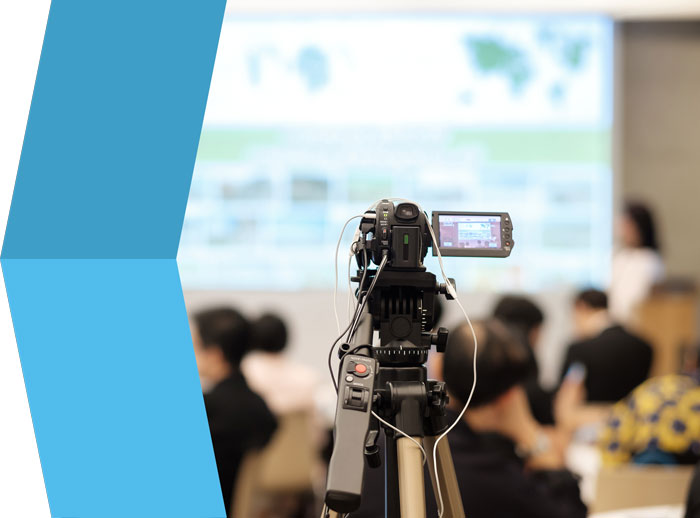How Legal Videography Can Make or Break Your Legal Strategy
How Legal Videography Can Make or Break Your Legal Strategy
Blog Article
Looking Into the Systems of Lawful Videography: Introduction Its Procedure in Safeguarding Authentic Visual Testimony for Judicial Proceedings
In the realm of judicial proceedings, the duty of lawful videography stands as a keystone in maintaining and offering aesthetic evidence. As technology remains to advancement, the systems behind lawful videography have actually become significantly detailed, providing an essential layer of credibility to testaments recorded on video clip. By diving into the operational intricacies of lawful videography, one can discover the precise procedures that guard the stability of visual proof provided in courtrooms - Legal Videography. This expedition not only clarifies the historic development of legal videography yet likewise hints at the future patterns that may better reinvent how aesthetic statements are upheld in the realm of justice.
Historical Advancement of Legal Videography
Checking out the historical development of legal videography exposes a substantial improvement in the capturing and discussion of visual evidence within the lawful landscape. In the past, lawful procedures greatly depended on written transcripts and pictures to record occasions and offer proof. With the introduction of video clip modern technology, the lawful industry saw a paradigm shift in just how aesthetic testament was recorded and presented.
The development of lawful videography can be mapped back to the late 20th century when advancements in video recording equipment made it much more obtainable for usage in court rooms. This technical advancement not only enhanced the accuracy and reliability of visual evidence but also reinvented the means instances existed to discretionary (Legal Videography). Lawyers started to identify the persuasive power of video recordings in communicating feelings, subtleties, and non-verbal signs that created records or pictures alone could not capture properly

Modern Technology Advancements in Video Documentation
What crucial technological developments have reinvented video paperwork in the legal area? The lawful area has actually seen considerable improvements in video clip documents modern technology that have actually boosted the authenticity and reliability of visual proof in judicial process. Among the crucial innovations is high-def (HD) video clip recording capacities, which give crystal-clear photos and sharp information that are crucial for accurately recording testimonies, facial expressions, and various other aesthetic hints. Additionally, the assimilation of timestamping and metadata attributes in video clip documents devices has actually allowed exact documentation of when and where the video was tape-recorded, making certain the integrity of the proof provided in court.
Furthermore, innovations in video security and watermarking technologies have actually bolstered the protection and tamper-proof nature of video evidence, guarding it against unauthorized changes or tampering. Moreover, the advent of cloud storage remedies and remote access abilities has structured the storage space, retrieval, and sharing of video clip proof, facilitating seamless partnership amongst legal specialists and guaranteeing reliable accessibility to vital aesthetic testaments when needed. These technical innovations in video documentation have certainly reinvented the lawful area, boosting the precision, credibility, and admissibility of visual evidence in judicial process.
Duty of Lawful Videographers in Court Room Setups
The advancement of video clip documentation innovation in the legal area has actually required an essential role for lawful videographers in court settings, making certain the stability and dependability of aesthetic statements presented throughout judicial procedures. Legal videographers play a basic function in capturing and maintaining precise aesthetic proof that can be critical in litigation. Their duty reaches setting up tools, taping proceedings, and producing high-grade video clips that precisely reflect the occasions in the courtroom.
In court room settings, lawful videographers need to follow rigorous guidelines and criteria to preserve the authenticity of the aesthetic record. They need to possess an eager eye for detail and a thorough understanding of lawful treatments to guarantee that the video they capture is a real depiction of the events that took place. Additionally, legal videographers often work very closely with lawful teams to make sure that the video clip evidence lines up with the instance's needs and can be efficiently offered in court to support the legal disagreements being made. On the whole, the role of legal videographers in court room setups is essential in promoting the concepts of justice and guaranteeing the transparency of lawful process.

Ensuring Admissibility and Integrity of Video Clip Proof
To maintain the trustworthiness of aesthetic evidence presented in lawful process, ensuring the admissibility and stability of video clip proof is an essential responsibility for lawful videographers. Admissibility refers to the acceptance of evidence by the court, and for video clip proof to be admissible, it needs to fulfill certain criteria. Legal videographers play a critical duty in guaranteeing that the videos they catch adhere to the regulations of proof, such as reliability, relevance, and authenticity.
Integrity of video clip proof entails keeping the creativity and precision of the video from the moment it is taped up until it is provided in court. This includes securely storing the video clip documents, recording the chain of guardianship, and avoiding any tampering or alterations. Lawful videographers have to abide by stringent procedures to ensure the integrity of the video proof and protect against any kind of difficulties to its authenticity.
Future Trends in Legal Videography
Given the click site increasing dependence on technology in legal proceedings, lawful videographers are positioned to accept ingenious improvements shaping the future of visual testimony capture and presentation. Among the famous patterns on the horizon is the combination of virtual reality (VIRTUAL REALITY) and augmented truth (AR) innovations into lawful videography. These innovations have the potential to change exactly how aesthetic evidence exists in courts, allowing discretionary to submerse themselves in the scene of the criminal offense or case.
Moreover, the use of fabricated intelligence (AI) formulas for video analysis is anticipated to streamline the procedure of evaluating and assessing big click for source amounts of video clip footage. AI can assist in recognizing essential minutes, abnormalities, and patterns within video clips, improving the effectiveness of lawful examinations.

Conclusion
In conclusion, lawful videography has played an important role in giving authentic aesthetic evidence for judicial procedures. Through technical advancements and the knowledge of lawful videographers, the integrity and admissibility of video clip proof are ensured in court settings. As legal videography proceeds to develop, it will certainly be important to promote standards that preserve the precision and reliability of visual testament for the future of legal procedures.
Checking out the historical progression of lawful videography reveals a considerable transformation in the capturing and presentation of aesthetic proof within the legal landscape.The evolution of video paperwork modern technology in the legal field has actually demanded a crucial function for legal videographers in court setups, ensuring the integrity and reliability of visual statements offered throughout judicial process. Additionally, legal videographers frequently work carefully with legal teams to make sure that the video clip proof straightens with the instance's needs and can be properly offered in court to sustain the this link legal arguments being made.To maintain the integrity of aesthetic proof presented in legal procedures, making sure the admissibility and honesty of video clip proof is a critical responsibility for legal videographers. As legal videography continues to develop, it will be vital to maintain requirements that preserve the accuracy and reliability of visual testimony for the future of legal proceedings.
Report this page